Launching the Arctic Infrastructure Inventory: A Resource to Inform Arctic Economic Development
In recent years, there has been a dramatic increase in attention placed on the Arctic, with a focus on economic development, telecommunications, military, and shipping. These emerging interests have highlighted the absence of critical infrastructure, particularly in the United States Arctic. Without the necessary infrastructure, the United States—as well as other Arctic nations—are ill-prepared address the realities of increased economic activity, national and civil security challenges, preventing and mitigating environmental disasters, and many other issues Arctic nations collectively face.
The Arctic Infrastructure Inventory, launched during this event, aims to help address and inform many of these issues. With over 8,000 projects, the Inventory is a digital list of infrastructure projects at the local, national and regional levels in the Arctic. The Inventory will be continuously updated and expanded, in order to better inform policymaking, investment, science research, and civil security planning. Please contact the Polar Institute with any questions, comments, or potential projects/resources to include.
Speaker Quotes
Michael Sfraga
“No matter which Arctic issue you choose to discuss—climate change, community security, civic security, national homeland security, local and regional economic development, international trade, social justice, the development and implementation of policies—the conversation almost always turns the need for a broad range of basic or specialized infrastructure. We have all been in our share of meetings for the following questions have been asked: where can we find out more about infrastructure in the Arctic? What types of infrastructure exists and where? What’s planned and why? Who's building this infrastructure? Who's funding this infrastructure? And so on. The Arctic Infrastructure Inventory is a tool, with a promise of answering and addressing some, if not all, of these questions over time.”
“When we first received the inventory there were about 900 projects in there, so to take it to tenfold is significant […]. One of the reasons we wanted to do this today, even though this is not totally completed yet, in terms of our vision, is that we could wait a very long time and have everything completely done—or we can get it out to the community as soon as possible. So again to reiterate what Jack has said, this is the very first initial stage of bringing 904 structural projects to 8000, knowing full well we've identified many thousands more and we'll just start filling this out as we go along. A big component of this will be the input we receive from the Arctic community as we go forward.”
"If this is just an academic exercise, we have failed. If it provides advancement of the effort and the narrative and reflects the needs of the community while bringing back good return of investment, then it’ll be an effort for the entire Arctic.”
Heidar Gudjonsson
“We at the Arctic Economic Council, we’re sort of championing economic development in the Arctic. So for us, what we found in the past has been our biggest challenge is the lack of information. And due to the lack of information there are all these misconceptions, misunderstandings out there. We can see last year, the Arctic shipping pledge which Nike and other mega companies signed up for, where they promised never to transport any goods through the Arctic even though it would have a less impact on the environment doing that than following the traditional routes. We also see this year that the mega banks, Citibank, Deutsche, Goldman Sachs and others, they signed up for a pledge that they would not do any mining or mineral extraction in the Arctic. So when we at the Arctic Economic Council are trying to have a real discussion with these people, we really need tangible information.”
“Many people outside the Arctic do not understand that there are four million people living [in the Arctic]. It’s a regulated and very prosperous area with a promising future. There is no area in the world which has a better track record of being economically responsible and sustainable. So it should come very naturally that we develop this area further than the other area, because the track record is there.”
“The reason why the Arctic has been developed in such a sustainable manner over the past millennia, or centuries, is because all the investments, all the developments have been done by the locals. And the locals are so responsible with their own environment. And one might argue that newcomers might be less responsible. That’s why it’s so important to have the Arctic investment protocol, to bring the Arctic standard to all infrastructure investments taking place in the Arctic.”
“There’s this transfer of knowledge that comes with capital that needs to be addressed. You have these, let’s say, smaller communities which are relying on one or two industries. And they need to diversify. To keep on the young people inside the communities, they need to offer more diverse opportunities […]. How do we bring the message across? What has been the obstacle? To start with, it’s information. International investors say, ‘Four million people scattered over how many thousands of square miles? How are we going to make any good business out of it?’ But the infrastructure is a big capital ticket. And returns there are favorable.”
James DeHart
“Infrastructure across the [Arctic] region obviously has great importance and implications for for national security and obviously a great importance to local communities, native communities around the region, to the well-being of those who call the Arctic their home, including our fellow citizens in state of Alaska […] and if we want to protect vital infrastructure and if we want to grow new infrastructure, of course we need to know where the gaps are are and where the opportunities exist. And I think that this inventory contributes a great deal to that and I think it's even more important when we look at the physical and the environmental changes that are happening in a dramatic fashion and will lead to the Arctic becoming a much busier place, maybe not tomorrow or next week but certainly in the years and decades ahead. And I think as the Arctic becomes busier, this will be for better or for worse. And we need to strive and do all we can to ensure it’s for the better.”
“So if you let me shift gears just a little bit and be maybe a little bit corny, I don't know how many of you still have vinyl records, but anybody who has vinyl knows that there's a Side A and a Side B. And you might think of Side A as the safeguards that we put in place to guard against substandard investment, to guard against investment that ignores the local workforce, that contains debt traps or ignores environmental requirements. And Side A is really important, but you also need Side B. You need to flip it over and you need the music of sustainable financing and advocacy for commercial engagement and the kind of investment that brings real benefits to local communities and which, in a lot of remote areas, people are desperate to have. So we need the entire piece of vinyl here. And I think that the Arctic infrastructure inventory has both sides and accomplishes that. And because it’s all about transparency, it contributes then to accountability as well as to opportunity.”
Sherri Goodman
“It's over 20 years ago now when I served as Deputy Undersecretary of Defense for Environmental Security and we, with the Navy, were trying to work–– we already knew about the problems of erosion at Shishmaref—and we were trying to see what we could do with DoD and Navy funds because of the Naval facility there to address those issues that were both affecting the military activities but more deeply affecting, of course, the local community […] and that is an example, I think, of a perennial challenge that we have with defense infrastructure […] because as you well know and we have, of course, military and defense facilities across the US and many of them, while they’re not in this inventory, they are adjacent in many cases to the kind of civilian infrastructure listed in this inventory. And when we come to talking about how to make infrastructure sustainable for the future in the climate era, we need to be accounting for the changing climate and how it's affecting all the infrastructure.”
"It also helps us provide, in my view, I think this inventory provides us additional domain awareness, awareness about what infrastructure is there and what's not there. As you know, there’s not a lot there, in many cases, so we need to know that too. Because as the former Secretary of Defense said, we need to up our game in the Arctic. So when we’re thinking about how to do that, it's a whole of society, whole of Arctic approach.”
“I'm excited about this because as I said, I think there's the transparency it affords, the domain awareness and the ability to use it as we develop more resilient solutions for infrastructure across the Arctic and as we look at more constructive engagement with allies and partners across the Arctic that also should be evidence-based. And this is evidence and it gives you one of the tools, a constructive tool, for engagement.”
Alice Rogoff
“Going forward, what this points out to us is that yes, there is a tremendous need for considering and adhering to the principles articulated in that Arctic Investment Protocol. At the same time, the Arctic is suffering from what I would call a capital drought [...]. There are some tremendous opportunities for investment in the Arctic, many of which are reflected in this inventory project. At the same time, there are very few international financial organizations of any kind—from private to government to all the hybrids in between—who have taken the time or have people on the ground who know the kinds of things that [Heidar Gudjonsson] knows about how they might be successful in their investing.”
“If this inventory and all the conversation that go with it could be fed into all of those groups such that we could have an ecosystem of talking about the investment opportunities in the Arctic, I think that would be a big step forward because there is a private sector out there that we need to get interested but we forget that we have these in-between entities (like Invest in Iceland) that can help be mouthpieces to the private sector. We just have to work with every form of communication we know how to make this of interest. Yes, there are tremendous investment returns possible in this Arctic project but until we can find centers of capital that are willing to believe it, we won't get them to put their money where the money should go.”
Gail R. Schubert
“We need to have real investments in the Arctic to support these communities. We have this 68 billion dollar permanent fund which was originally intended to be a rainy day fund but it’s not just raining here, it is storming here in Alaska. I think we need to start to look inward to supporting our own growth, sustainment, and infrastructure, and the permanent fund certainly is one of the funds that could be utilized for that. The pensions fund which I served on for a number of years are somewhat more restricted for the purpose that it could be utilized for.”
“We don't really have the kinds of natural resources that would promote [coinvesting] [...]. In terms of making the coinvestment, it is clear that there are needs in our region and the port for example is something that is critically needed and I know that they are working with engineers and the government in terms of getting funding for that [...]. It would be great if we had a lot of natural resources and things that we could do to help develop the region more economically but we do what we can with what we have, and we will continue to do that.”
“People may have different ideas in terms of what we should and should not do. I think that we always have to act in the best interest of the state and the people in terms of pushing development and other things that we do and have it move forward.”
Mead Treadwell
“There is a lot of money that will have to come in. The four million people who live in the Arctic just don’t have enough money under their mattresses to cover our infrastructure needs, whether it is for new ports, whether it's for ice breakers, whether it's for the basic sanitation that you need in rural parts of the world, whether it is for new energy projects. There were three things that we started at the World Economic Forum that we felt would be very very important. First was a sort of an educational effort with other members of the forum, a very influential group, on the imperative of looking at the Arctic with reality. It’s not just a snowglobe, it's a place where people live and we are very actively supporting activity around the world whether it is trade, transportation, minerals, energy, food, and sustainable development. The second set of things we did is we published a set of principles for investment in the Arctic and we asked people to sign up for these principles. That program is now housed at the Arctic Economic Council. The third thing is we wanted to move the inventory to an independent place because this was not to be seen as a list of projects that any of us in the private center were promoting but a dispassionate look from the Wilson Center about what is the inventory here.”
“When we looked at investment and private equity in the least populated areas, it was really hard to find a diversity enough of economic activity sometimes to make private equity work and that works more where there is a greater population, where there are great anchor projects like Red Dog.”
Speakers
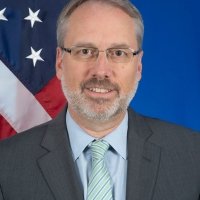
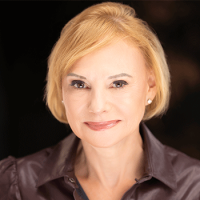
Author, Threat Multiplier: Climate, Military Leadership & the Fight for Global Security.
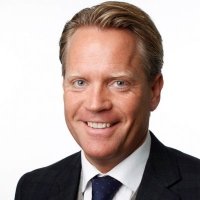

Publisher, ArcticToday
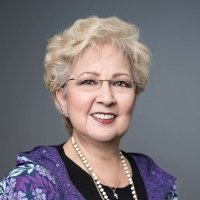
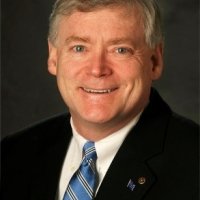
former Lieutenant Governor, State of Alaska; former Chair, U.S. Arctic Research Commission
Introduction
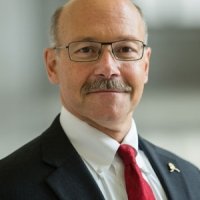
US Ambassador-at-Large for Arctic Affairs; Former Chair, US Arctic Research Commission
Keynote Speaker

Hosted By

Polar Institute
Since its inception in 2017, the Polar Institute has become a premier forum for discussion and policy analysis of Arctic and Antarctic issues, and is known in Washington, DC and elsewhere as the Arctic Public Square. The Institute holistically studies the central policy issues facing these regions—with an emphasis on Arctic governance, climate change, economic development, scientific research, security, and Indigenous communities—and communicates trusted analysis to policymakers and other stakeholders. Read more
